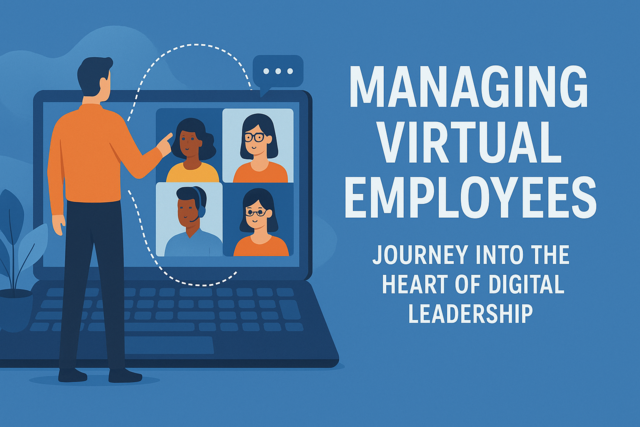Managing Virtual Employees
Empower Your Remote Workforce, Elevate Your Leadership

4 Hours average completion time
0.4 CEUs
15 Lessons
21 Exams & Assignments
30 Reference Files
91 Articles
Mobile Friendly
Last Updated December 2025
"Managing Virtual Employees": Journey into the Heart of Digital Leadership!
Embark on an exhilarating voyage into the realm of virtual management with "Managing Virtual Employees," a cutting-edge online course meticulously tailored for the visionary leaders steering the ship of remote teams in our increasingly digital era. This transformative experience seeks to:
-
Illuminate the timeless core principles of management that form the bedrock of effective leadership.
-
Decode the intricate tapestry of virtual work, empowering you to adapt and thrive in this distinctive digital landscape.
Dive deep into the essence of management, unraveling the myriad skills that breathe life into leadership, and witnessing how these competencies evolve and flourish within the dynamic expanse of virtual workspaces. Through fifteen meticulously crafted modules, you'll not only comprehend each topic but immerse yourself in its profound significance, acquiring actionable insights, avant-garde strategies, and indispensable tools to hone your craft.
With engaging examination exercises accompanying each chapter, you'll not only gauge your progress but also refine your understanding, ensuring mastery at every juncture.
Whether you're a seasoned manager seeking to navigate the digital tide, an aspirant setting sights on leadership horizons, or a curious explorer at the crossroads of management and virtual realms, this course beckons.
Step into the future of leadership, harness the power of the digital age, and redefine what it means to lead in a boundlessly interconnected world. Your odyssey into the heart of digital leadership awaits!
- Transformative conflict resolution strategies
- Goal setting with precision
- Strategic virtual communication mastery
- Innovative digital collaboration insights
- Fostering accountability in virtual teams
- Effective remote team leadership
- Self-management for professional growth
- Diversity and inclusion advocacy
- Empowering through delegation and trust
- Enhancing productivity with digital tools
-

Operations Management 101
-

Strategic Planning
-

Respectful International Workplace
-

Disaster Risk Reduction: Preparing for Emergencies
-

Decision Making Skills
-

SalesForce 101
-

Workplace Safety
-

Running Effective Meetings
-

Sensitivity Training for the Workplace
-

Business Etiquette
-

Team Building 101
-

Problem Solving Strategies
-

Managing Difficult Employees
-

Professional Organizer Training
-

Business Budgeting 101: How to Plan, Save, and Manage
-

Marketing Copywriter 101
-

Business Law for Entrepreneurs
-

Purchasing and Vendor Management 101
-

Recruitment and Retention Strategies
-

Launching Your Home Daycare Business
-

Organizational Behavior in Business
-

Creating a Positive Work Environment
-

Understanding Workers' Compensation
-

Introduction to Six Sigma
-

Restaurant Management Mastery